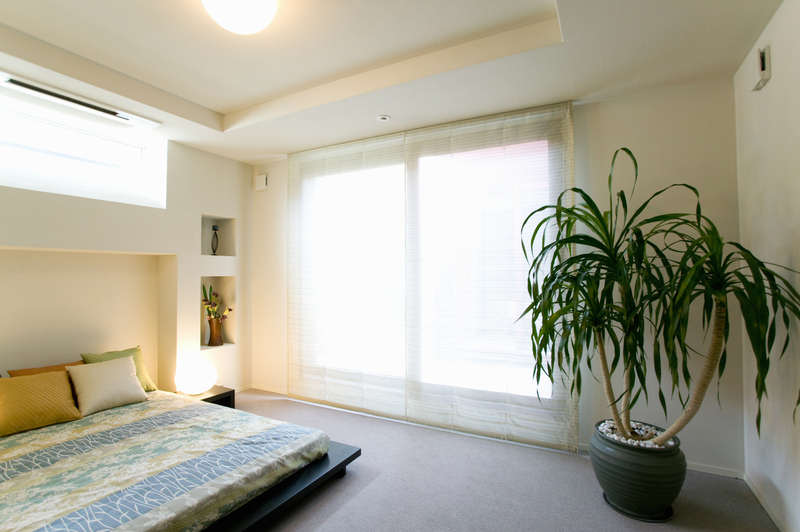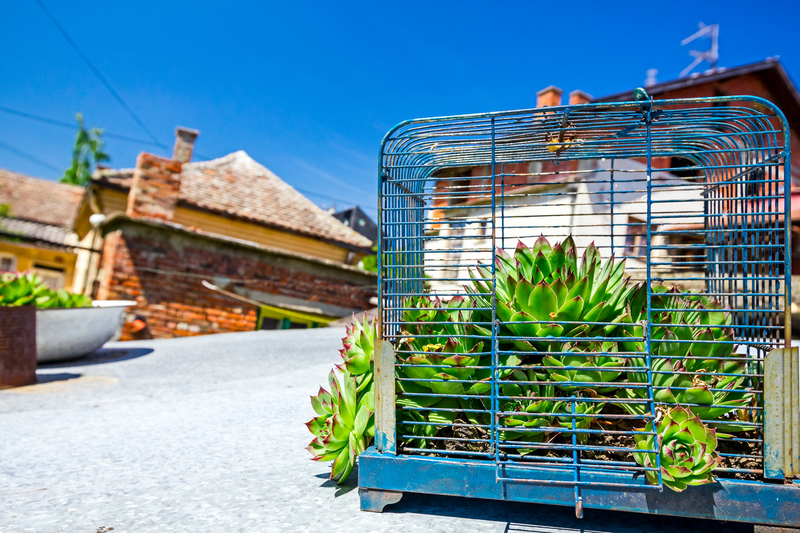A Step by Step Guide to Keeping Artificial Grass Fresh and Spotless
Posted on 14/10/2025
Artificial grass has changed the landscape game for homeowners, businesses, and pet owners. It's low-maintenance, evergreen, and aesthetically pleasing. But to keep it looking impeccable year-round, regular care is essential. This comprehensive guide will walk you through the best practices for keeping artificial grass fresh and spotless, ensuring your investment stays pristine for years to come.
Why Maintaining Artificial Grass Matters
Artificial turf promises a lush, green look without the fuss of traditional lawns. Yet, neglecting basic upkeep can lead to build-up of debris, odors, and even matting. With consistent attention, your fake grass stays inviting for kids, pets, and guests--as well as long-lasting and hygienic.
Key Benefits of Regular Artificial Grass Maintenance
- Longevity: Routine care extends the life of your synthetic turf.
- Hygiene: Prevents the growth of bacteria, mold, and fungus.
- Curb Appeal: Keeps your yard or facility looking vibrant and welcoming.
- Safe Play: Reduces risk of allergens and sharp objects hidden in debris.

Essential Tools and Supplies for Cleaning Artificial Grass
Before diving into the step by step process, gather these essential supplies for cleaning and maintaining your artificial turf:
- Stiff-bristled brush or broom
- Garden hose or low-pressure power washer
- Plastic rake (avoid metal tines)
- Leaf blower (optional)
- Mild soap or specialized artificial grass cleaner
- White vinegar (for persistent stains or odors)
- Soft cloths or sponges
- Pet waste bags and pooper scooper (for pet owners)
- Sand infill and seed (for leveling and repair)
Step by Step Guide: How to Keep Artificial Grass Fresh and Spotless
Step 1: Remove Loose Debris Regularly
Leaves, twigs, dust, and pet hair can accumulate quickly on artificial lawns. Removing debris not only looks better but also reduces the risk of moss, bacteria, and pests.
- Use a plastic rake or leaf blower to gently clear away leaves, sticks, and rubbish.
- For small yards or balconies, a stiff-bristled broom works perfectly.
- Clean weekly or as needed, especially in autumn or windy conditions.
Step 2: Address Spills and Stains Immediately
The sooner you tackle stains, the easier removal will be. Artificial grass is designed to resist staining, but substances like food, drinks, or pet waste can discolor the turf if left untreated.
- Blot up spills with paper towels or an absorbent cloth as soon as possible.
- Rinse the area with a garden hose.
- For tougher stains, use a mild soap and warm water solution or a turf-safe cleaner.
- Gently scrub with a soft brush; avoid harsh chemicals or metal materials that can damage fibers.
- Pet urine: Rinse thoroughly with water. For lingering odors, mix equal parts white vinegar and water, apply, then rinse off after 15 minutes.
Step 3: Groom the Grass Fibers
A key part of keeping your artificial grass looking lush is brushing the turf blades upright. After regular foot traffic or heavy rain, fibers can become flat and uneven.
- Use a stiff-bristled broom or a turf brush against the direction of the blades (against the grain).
- Perform this grooming every 1-2 weeks or after crowded events.
- For larger areas, consider a power broom for a quicker, more uniform result.
Step 4: Rinse Artificial Grass to Remove Dust and Pollen
Even in low-traffic zones, dust and pollen settle on the surface. Periodically rinse your fake grass to prevent build-up and keep colors looking vibrant.
- Spray the turf with a garden hose, using a steady stream to wash off dirt and pollen.
- Avoid using high-pressure washers every time, as this could damage seams or infill.
- Pay special attention to shaded or wind-exposed patches.
Step 5: Sanitizing for Homes with Pets or Kids
For those with pets, playgrounds, or high foot traffic, regular sanitizing ensures a safe and hygienic artificial lawn.
- Remove pet droppings promptly using a pooper scooper or bags.
- Rinse the area, then spray with a pet-friendly artificial turf cleaner or diluted vinegar solution.
- Allow to air dry before allowing animals or children to play on the grass.
- Conduct this process every 1-2 weeks, or more often during summer.
Step 6: Combatting Weeds and Moss Growth
Even the best-installed artificial lawns can occasionally see weed or moss growth, especially along the edges.
- Manually remove any weeds you notice as they appear.
- Use a moss or weed killer labeled as safe for artificial grass. Avoid products containing bleach or harsh acids.
- Edge regularly to prevent natural plants from encroaching onto the turf.
Step 7: Maintain the Infill Level
The infill layer (usually silica sand or rubber granules) helps turf blades stand up and creates a cushioned feel. Over time, this layer can settle or shift.
- Inspect infill every few months, especially in high-traffic zones.
- Add more approved infill material as needed, spreading evenly and brushing it in.
- This keeps the lawn soft underfoot and prevents matting.
Deep Cleaning Artificial Turf: Seasonal Advice
Spring and Summer Deep Clean
- After winter, give your artificial grass a thorough clean. Remove large debris, scrub away any stains, and brush all areas well.
- Adjust infill and check for damage at the seams or borders.
Autumn and Winter Lawn Care
- Regularly remove fallen leaves to prevent staining and mold.
- If snow falls, brush off heavy accumulation. Let thin layers melt naturally to avoid fiber damage.
- Reroute foot traffic away from icy or muddy patches.
Preventing Common Problems and FAQs
How Do I Stop My Artificial Grass from Smelling?
The main causes of odor in synthetic grass are pet urine, food spills, and stagnant moisture. Regular rinsing, prompt removal of organic material, and using turf deodorizer or diluted white vinegar will help keep odors at bay.
Can Artificial Grass Get Moldy?
While artificial lawns resist most fungal and mold growth, trapped organic debris or standing water can create ideal conditions. Ensure proper drainage, remove debris, and brush the grass regularly to prevent mold.
Is Power Washing Safe for Fake Grass?
Occasional power washing is acceptable, but always use low-pressure settings. High pressure may lift seams, damage fibers, or dislodge infill. For routine cleaning, a garden hose is best.
Do I Need to Disinfect Artificial Turf?
For homes with pets, young children, or food spills, monthly disinfection is advisable. Use specialized turf sanitizers or a mix of water and white vinegar. Avoid bleach or caustic products.
What's the Best Way to Clean Artificial Grass After Pets?
- Remove solid waste daily.
- Rinse with water to remove urine.
- Periodically sanitize with pet-safe cleaning products.
Expert Tips for Keeping Fake Grass Looking Real and Inviting
- Avoid parking vehicles or placing heavy furniture on the grass for long periods. This prevents permanent matting.
- If your artificial grass covers a shaded or damp spot, increase cleaning frequency to prevent algae or mold.
- Consider using a sand infill to weigh the turf down and keep blades upright.
- Keep an eye on seam joints, especially after heavy use or storms.
- Schedule professional artificial turf maintenance every 12-18 months for a deep clean and inspection.

Choosing the Right Artificial Grass Cleaner
When selecting a cleaning product, ensure it's compatible with your artificial grass (always check manufacturer recommendations). Many turf cleaners are biodegradable and pet-safe. For ongoing care, water, mild soap, or diluted vinegar generally suffice for most situations.
Homemade Artificial Grass Cleaner Recipe
- 1 cup white vinegar
- 2 cups water
- A few drops of gentle dish soap
Mix well in a spray bottle. Apply to stained or smelly areas, scrub as needed, then rinse thoroughly.
Conclusion: Enjoying Fresh and Spotless Artificial Grass Year-Round
Keeping your artificial grass clean and fresh is simpler than maintaining a traditional lawn but requires regular attention. By following these proven steps--removing debris, spot cleaning, brushing, rinsing, and sanitizing as needed--you'll keep your synthetic grass looking flawless and inviting. Whether you're hosting outdoor parties, enjoying playtime with pets, or simply relaxing in your oasis, a well-maintained artificial lawn is a pleasure all year long.
For the latest tips and tools on maintaining artificial turf, consult your supplier's guidelines, and invest in quality brushes and non-abrasive cleaners for the most effective results. Happy landscaping!







